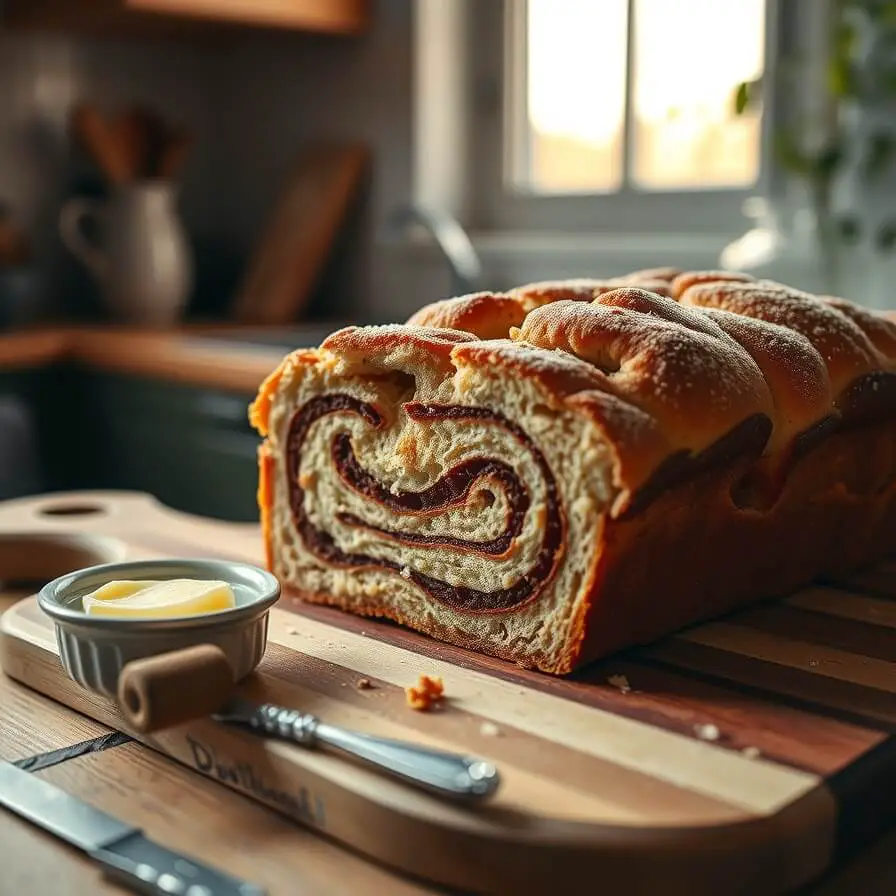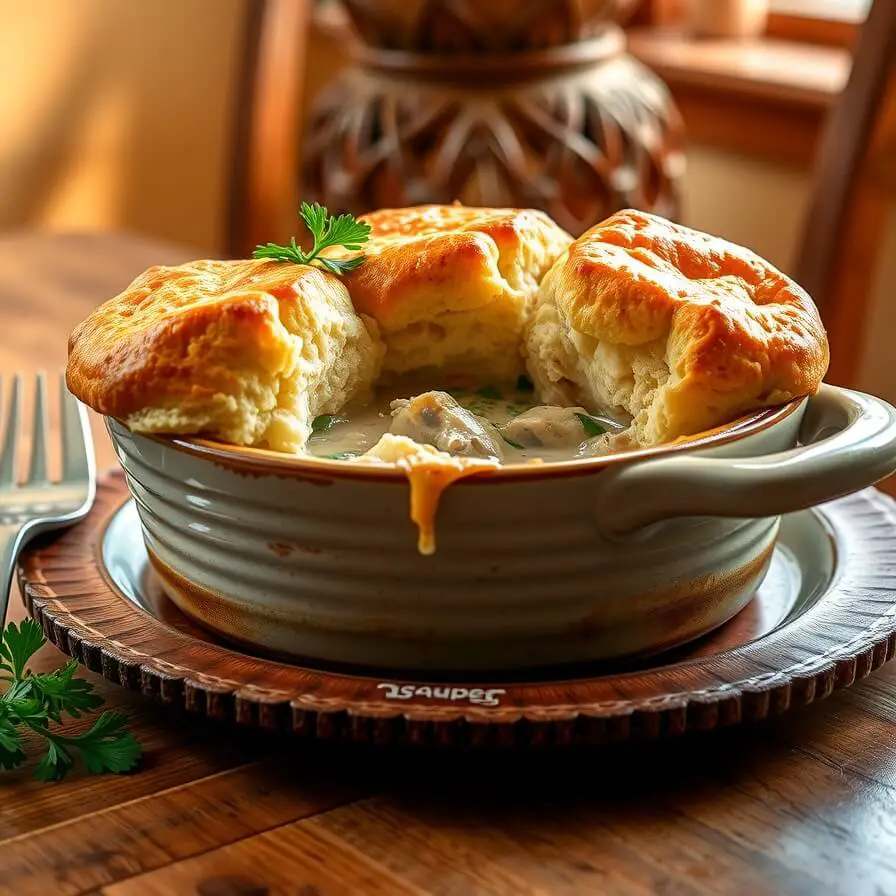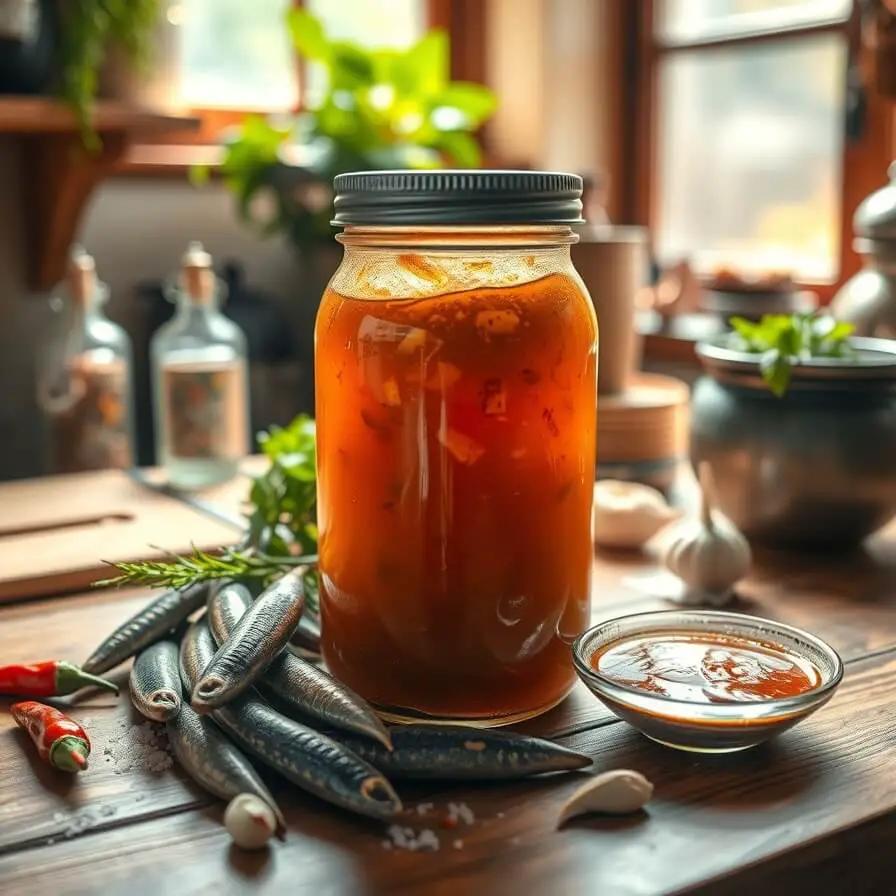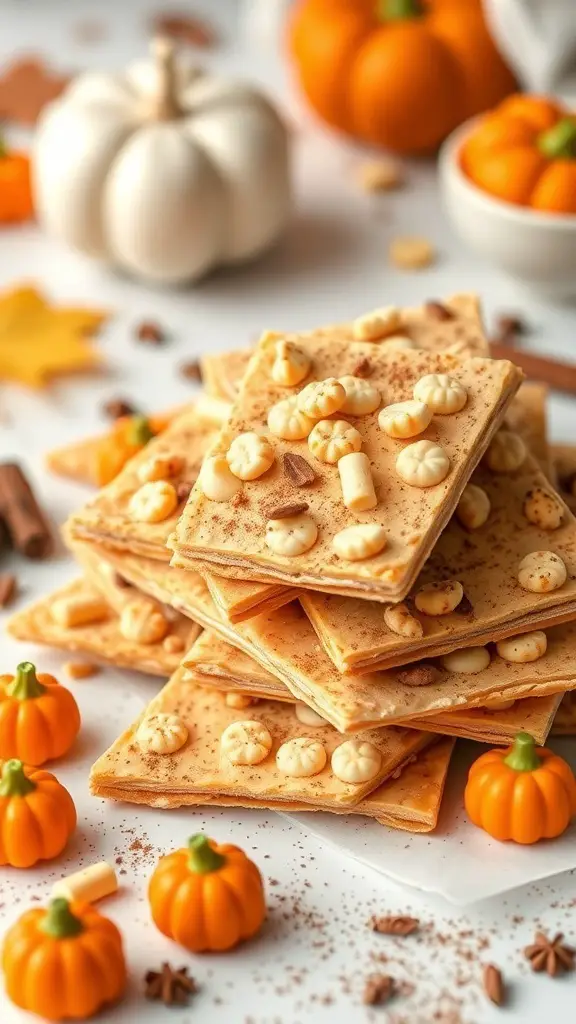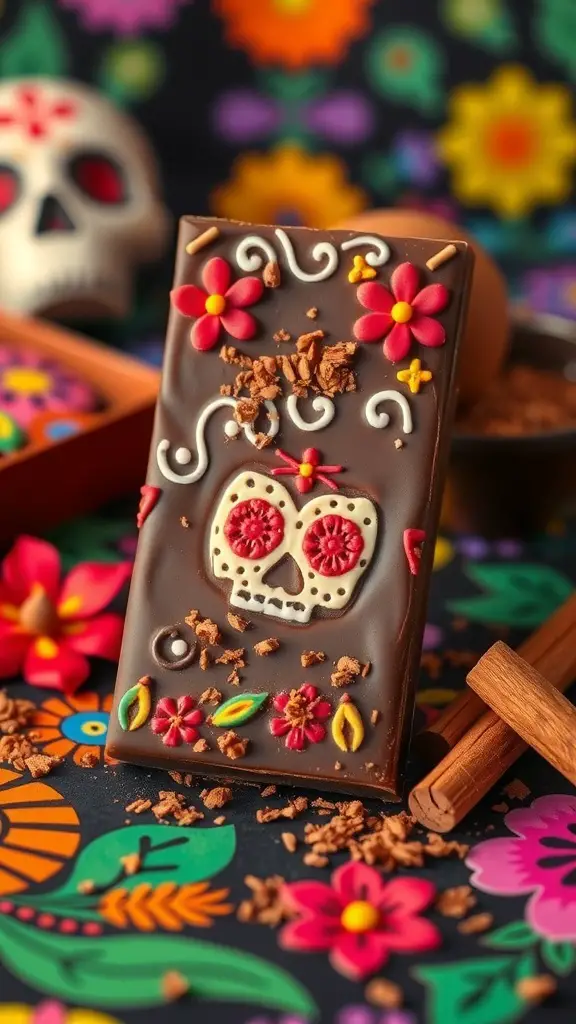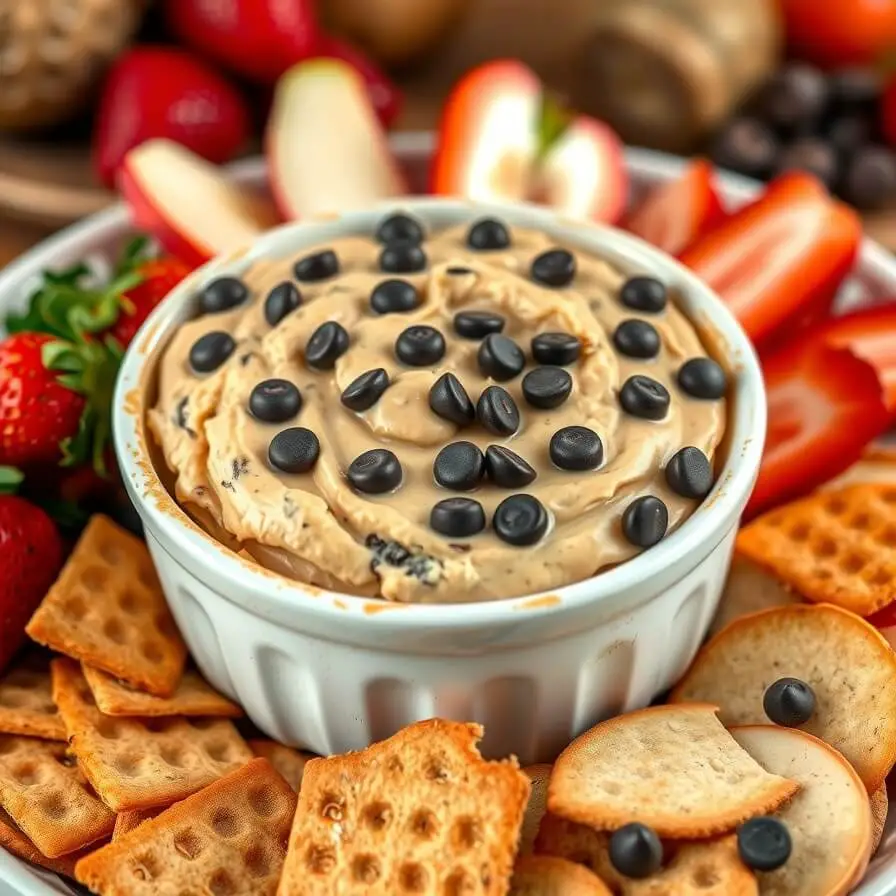Cinnamon Bread Recipe
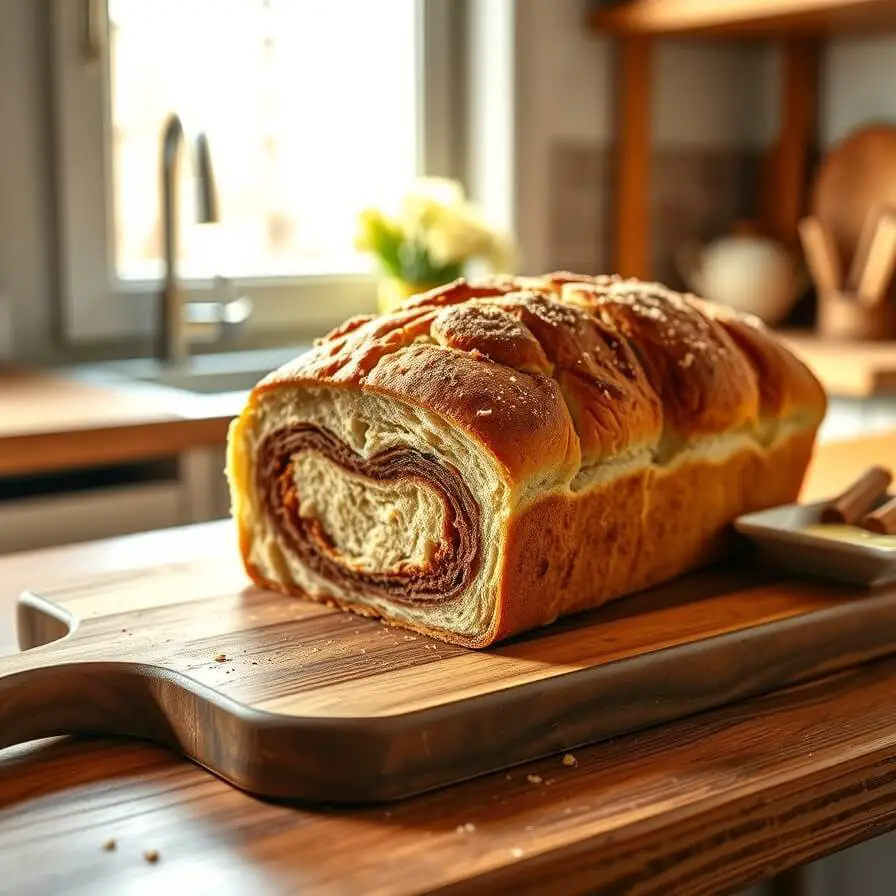
The smell of cinnamon bread takes me back to one of the first apartments I ever lived in — a tiny kitchen with a squeaky oven door and no counter space to speak of. I’d just moved out on my own, and every Saturday morning I’d call my mom for recipes. One weekend, she said, “Try making cinnamon bread — it makes the whole place smell like love.”
That was all the convincing I needed.
The first loaf wasn’t perfect. The top was beautifully golden, but the inside was a little underdone. Still, the swirl of cinnamon sugar melted into these ribbons of warmth, and I remember sitting by the window, breaking off a piece while it was still steaming. It was soft, buttery, and sweet in that quiet, comforting way that only homemade bread can be.
Now, years later, I still make it on cool mornings or lazy Sundays. It’s one of those recipes that turns a house into a home — the kind where neighbors pause at your door because something smells too good to ignore.
And the best part? It’s surprisingly simple.
Quick Baking Snapshot
Here’s the gist before we dive in — because I know sometimes you just need to check if you have the time (and the patience) before you start kneading.
| Step | Time | Notes |
|---|---|---|
| Prep Time | 25 minutes | Includes mixing and first rise |
| Resting/Rising Time | 1 hour 15 minutes | Can vary slightly based on room temp |
| Bake Time | 35–40 minutes | Until golden brown on top |
| Cooling Time | 20 minutes | Slice once slightly cooled |
| Total | About 2 hours 15 minutes | Worth every minute |
Ingredients in Context
You can make cinnamon bread with just pantry basics, but there are a few small details that change everything — the kind of flour, the butter temperature, even how you sprinkle the sugar mix.
Flour – I usually go for bread flour for a fluffier, chewier texture, but all-purpose works perfectly fine if that’s what’s in your pantry. Just know the crumb will be a bit softer.
Yeast – Instant yeast saves you the trouble of proofing, but if you’re using active dry, dissolve it in warm milk first (about 110°F). Don’t rush this step — yeast is the backbone of that lovely lift.
Milk & Butter – Whole milk and real butter are the soul of this bread. The milk gives tenderness, while melted butter enriches the dough. If you prefer dairy-free, use oat milk and vegan butter — you’ll still get that cozy flavor.
Sugar – The dough itself has just a touch of sugar, but the cinnamon filling is where the magic happens. I mix brown sugar and cinnamon for depth — the molasses in brown sugar caramelizes slightly as it bakes, giving you that iconic swirl.
Egg – Just one, but it adds richness and color.
Cinnamon – Freshly ground cinnamon makes a difference. I learned that after accidentally using a jar that had been in the cupboard for a year — the flavor was flat. Now, I replace my cinnamon every few months.
Optional Add-ins – A handful of raisins or chopped pecans mixed into the swirl layer adds texture and a touch of old-fashioned charm.
Finishing Touch – A light brushing of melted butter right after baking makes the crust glisten and keeps it soft.
Why This Bread Works So Well
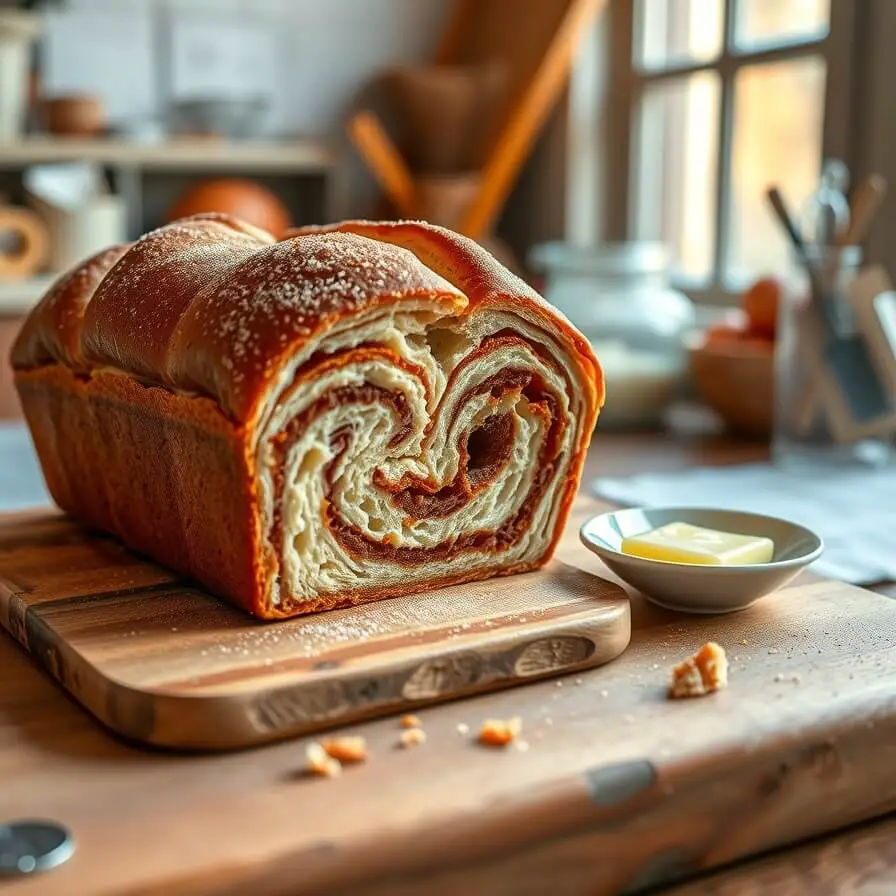
There’s a reason cinnamon bread feels so universally comforting — it’s a balance of science and nostalgia. The dough itself is enriched but not overly sweet, which lets that cinnamon-sugar layer shine instead of overwhelming your taste buds.
The structure comes from a slightly higher ratio of flour to liquid, so the bread can hold its swirl without collapsing. The butter and egg tenderize it, while the yeast gives it that delicate rise that makes each slice light yet satisfying.
And then there’s the smell. The combination of butter and cinnamon hitting the heat of the oven — that’s what gets you. It’s the kind of aroma that can make even a rushed morning slow down.
But perhaps what makes this recipe really shine is that it’s forgiving. Even if your swirl isn’t perfect or your loaf cracks slightly on top, it still tastes like a cozy morning wrapped in a blanket.
Step-by-Step: From Dough to Slice
If you’ve never baked with yeast before, don’t worry. I’ll walk you through it exactly as I do in my own kitchen — down to the part where I peek into the oven just to make sure it’s rising like it should.
Step 1: Warm the Milk and Activate the Yeast
In a small saucepan (or microwave-safe bowl), warm ¾ cup whole milk until it’s just about body temperature — warm but not hot. Sprinkle in 2¼ teaspoons yeast (that’s one packet) and a teaspoon of sugar. Give it a light stir and let it sit for 5–10 minutes.
When it’s ready, it should look a little foamy — that’s your yeast waking up. If it stays flat, your milk might’ve been too hot, or your yeast is old (we’ve all been there).
Step 2: Mix the Dough
In a large bowl, combine 2¾ cups flour, ¼ cup sugar, and ½ teaspoon salt. Add 1 beaten egg, ¼ cup melted butter, and the yeast-milk mixture.
Use a wooden spoon (or the dough hook on a mixer) to bring everything together. It’ll start sticky, then gradually form a soft ball of dough.
If it’s too sticky, add a tablespoon or two of flour at a time — but stop when it’s slightly tacky. You want that bit of stickiness; it’s what keeps the bread moist later.
Step 3: Knead and Let It Rise
Turn the dough out onto a lightly floured surface. Knead for about 6–8 minutes, until smooth and elastic. This is the part I find oddly calming — there’s a rhythm to it, the push and fold, the way the dough starts to spring back.
Place it in a greased bowl, cover with a clean kitchen towel, and let it rise for about an hour or until doubled in size. If your kitchen is chilly, I sometimes tuck it into the (off) oven with just the light on — it creates the perfect little proofing spot.
Step 4: Make the Cinnamon Filling
While the dough rises, mix together ⅓ cup brown sugar, 2 tablespoons white sugar, and 1 tablespoon ground cinnamon. If you want to take it up a notch, add a pinch of nutmeg or a tiny splash of vanilla extract.
This mixture is what turns a plain loaf into something worth slowing down for.
Step 5: Roll, Fill, and Shape
Once your dough has puffed up beautifully, punch it down gently — that’s just to release extra gas bubbles. Roll it out into a rectangle, roughly 8×14 inches.
Brush the surface with a bit of melted butter, then sprinkle the cinnamon-sugar mixture evenly across the dough, leaving a small border at the edges.
Starting from the shorter end, roll the dough tightly into a log. Pinch the seam closed and tuck the ends slightly underneath. Place it seam-side down into a greased 9×5-inch loaf pan.
Step 6: Second Rise
Cover again and let it rest for about 30–40 minutes, until it’s puffed up and almost doubled. You’ll notice the loaf feel airy when you gently touch it — that’s the sign it’s ready.
Step 7: Bake
Preheat your oven to 350°F (175°C). Bake for 35–40 minutes, until the top is golden brown and your kitchen smells like a dream.
If you’re unsure whether it’s done, tap the top gently — it should sound hollow.
(Confession: my first loaf looked perfect outside but was slightly doughy inside. Now I always check the center with a thermometer — 190°F is the magic number for soft, baked-through bread.)
Step 8: Cool and Glaze (Optional)
Let the bread cool in the pan for about 10 minutes, then transfer to a wire rack. Brush the top with a little more melted butter while warm — it keeps the crust tender and shiny.
If you’re in a sweet mood, you can drizzle a simple glaze of powdered sugar and milk once it cools. But honestly? It’s heavenly plain, especially toasted with butter the next morning.
The Best Ways to Enjoy Cinnamon Bread
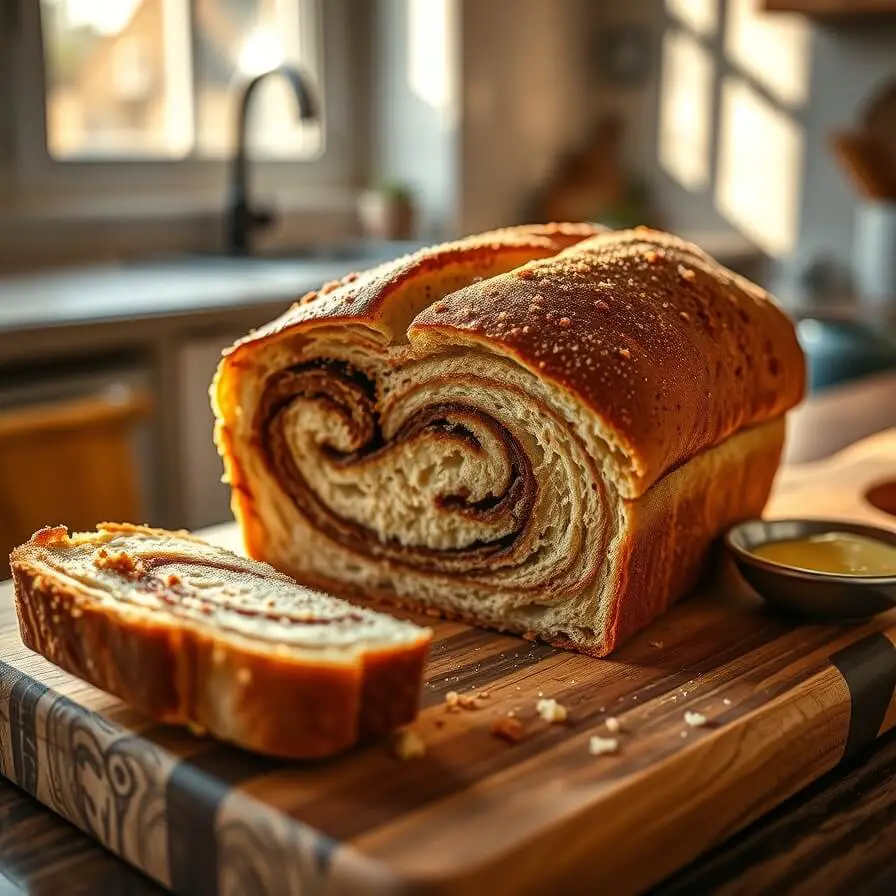
There’s something almost ceremonial about slicing into a warm loaf of cinnamon bread. I like to break it into thick slices, letting the soft interior show its delicate swirls. It’s a treat on its own, but a little butter or cream cheese elevates it instantly.
For mornings, I often toast a slice lightly — the warmth makes the cinnamon-sugar aroma even more intense. A drizzle of honey or a spread of fruit preserves adds a sweet, tangy contrast that’s surprisingly sophisticated for such a simple loaf.
Afternoon tea? Cut the bread into smaller squares, stack on a plate, and watch it disappear. The soft, sweet slices pair beautifully with coffee, chai, or a simple glass of cold milk.
And if you’re serving guests, a dusting of powdered sugar or a light glaze gives it a bakery-style finish without fuss. I remember bringing a loaf to a friend’s brunch once; everyone asked if I had bought it. There’s nothing like homemade bread that looks elegant but was baked in your own kitchen.
Pro Notes & Common Mistakes
Even after making this recipe countless times, I still have a few tricks up my sleeve:
- Butter Temperature – Melted butter should be warm but not hot. Too hot and it kills the yeast; too cold and the dough won’t absorb it evenly.
- Yeast Activation – Always proof your yeast if using active dry. Instant yeast skips this step, but don’t forget that your milk shouldn’t exceed 115°F.
- Rolling the Dough – Don’t overfill with cinnamon sugar. A thin, even layer ensures the loaf rises properly without spilling over the edges.
- Second Rise – Skipping or shortening the second rise can make the bread dense. Patience here ensures that soft, pillowy texture.
- Baking Time – If the top browns too quickly, tent with foil. Overbaked bread dries out, but underbaked bread is doughy — check with a thermometer (190°F internal).
I learned these tips the hard way. My first loaf split down the middle and had a doughy center, but the smell convinced me to keep tweaking. Now, each loaf comes out soft, golden, and beautifully swirled.
FAQs About Cinnamon Bread
Can I make this bread gluten-free?
Yes! Swap the flour for a gluten-free blend designed for yeast breads. You may need to add a bit more liquid or a binding agent like xanthan gum to get a similar texture.
Can I make this vegan?
Absolutely. Use plant-based milk (like oat or almond) and vegan butter. Skip the egg or use a flax egg (1 tablespoon ground flax + 3 tablespoons water, let sit for 5 minutes).
How do I keep it soft for longer?
Store in an airtight container at room temperature for up to 4 days. Freezing slices individually is ideal for longer storage. Toast or microwave briefly before serving.
Can I add other flavors?
Yes! Chopped nuts, raisins, or even a pinch of cardamom in the filling layer complement the cinnamon nicely. Just don’t overload the loaf — too much filling can make it hard to rise evenly.
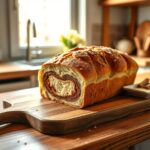
Cinnamon Bread Recipe
- Total Time: 2 hours 15 minutes
- Yield: 1 1x
- Diet: Vegetarian
Description
Soft, buttery, and swirled with rich cinnamon sugar, this homemade cinnamon bread is perfect for cozy mornings or weekend treats. Easy enough for first-time bakers, but with tips that make it foolproof for seasoned pros. Its golden crust, pillowy interior, and irresistible aroma will fill your kitchen with warmth and comfort. Slice thick for breakfast, toast with butter, or enjoy plain with a cup of coffee.
Ingredients
- 2¾ cups bread flour (or all-purpose)
- ¼ cup granulated sugar
- ½ teaspoon salt
- 2¼ teaspoons instant yeast (or 1 packet active dry yeast)
- ¾ cup whole milk (or plant-based milk)
- ¼ cup melted butter (or vegan butter)
- 1 large egg (or flax egg)
- ⅓ cup brown sugar
- 2 tablespoons white sugar
- 1 tablespoon ground cinnamon
- Optional: ½ cup raisins or chopped pecans
- Optional glaze: ¼ cup powdered sugar + 1–2 teaspoons milk
Instructions
- Warm milk to about body temperature. If using active dry yeast, dissolve yeast and 1 tsp sugar in milk; let sit 5–10 minutes until foamy.
- In a large bowl, combine flour, sugar, and salt. Add egg, melted butter, and yeast-milk mixture. Mix until soft dough forms.
- Knead on a floured surface 6–8 minutes until smooth and elastic. Place in greased bowl, cover, and let rise until doubled (~1 hour).
- Prepare cinnamon filling by mixing brown sugar, white sugar, and cinnamon (optional: nutmeg or vanilla).
- Punch down dough and roll into an 8×14 inch rectangle. Brush with butter and sprinkle cinnamon mixture evenly. Roll tightly from short end and pinch seam. Place seam-side down in greased loaf pan.
- Cover and let rise 30–40 minutes until puffed.
- Bake at 350°F (175°C) for 35–40 minutes until golden brown. Tent with foil if browning too fast. Check internal temp: 190°F.
- Cool 10 minutes in pan, then transfer to rack. Brush with butter while warm. Optional: drizzle glaze after cooling.
Notes
- Adjust sugar in filling to taste; 1–2 tablespoons more sugar gives a sweeter loaf.
- For overnight prep, let dough rise slowly in the fridge. Shape and bake in the morning.
- Dough can be enriched with a pinch of cardamom or nutmeg for extra warmth.
- Prep Time: 25 minutes
- Cook Time: 35–40 minutes
- Category: Baked Goods
- Method: Yeast Bread
- Cuisine: American
Nutrition
- Serving Size: 1
- Calories: 220
- Sugar: 11g
- Sodium: 120mg
- Fat: 7g
- Saturated Fat: 4g
- Unsaturated Fat: 3g
- Trans Fat: 0g
- Carbohydrates: 34g
- Fiber: 1g
- Protein: 5g
- Cholesterol: 25mg

